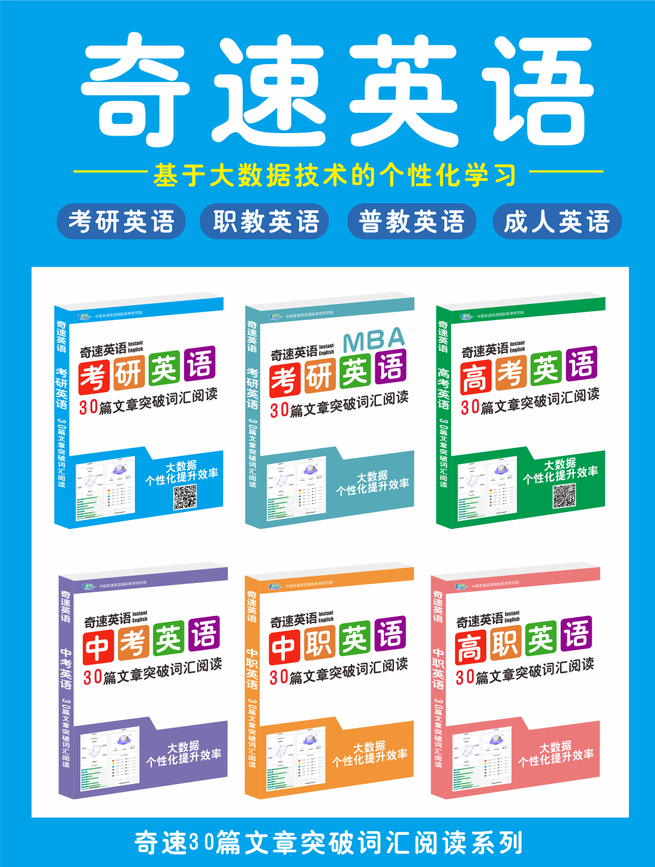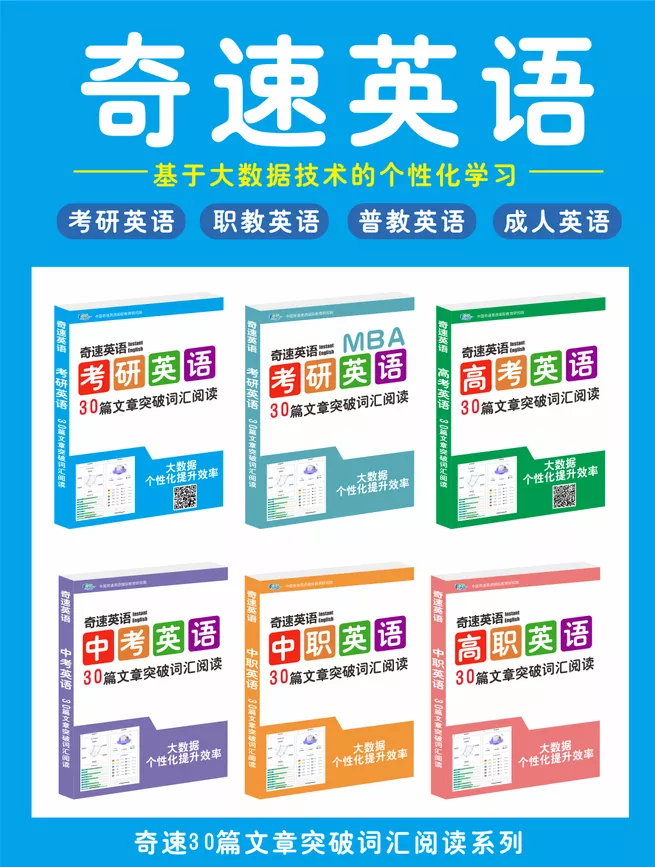-
2021-09-23
-
2021-09-23
-
2021-09-23
-
2021-09-23
-
2021-09-23
更新时间:2021-09-23浏览:次评论: 条
2021-09-23
2021-09-23
2021-09-23
2021-09-23
2021-09-23
Unit 8 How do you make a banana milk shake?
一、短语归纳
milk shake 奶昔
turn on打开
pour into 倒入
a cup of yogurt 一杯酸奶
a good idea 一个好主意
on Saturday 在星期六
cut up 切碎
put into 放入
one more thing 还有一件事
a piece of一片/一张/一块
at this time在此时
a few 几个
fill…with… 用…装满
cover…with… 用…盖住
one by one一个接一个
a long time长时间
First …Next…Then…Finally 首先……接下来……然后…… . 最后……
二、必背句型
① No, one more thing.
不,还有一件事。
② Finally, don’t forget to add some salt.
最后,不要忘了加些盐。
③ How do you make a banana milk shake?
你是怎样制作香蕉奶昔的?
④ These days, most Americans still celebrate this idea of giving thanks by having a big meal at home with their family.
这些天来,大多数美国人仍然通过在家里和家人吃一顿大餐的方式,庆祝这种感恩的思想。
⑤ Next, fill the turkey with this bread mix.
接着用这个面包混合物填满火鸡。
⑥ Finally, serve it to your friends with some vegetables.
最后,放一些蔬菜把它端给你的朋友们。
⑦ When it is ready, place the turkey on a large plate and cover it with gravy .
当它准备好时,把火鸡放在一个大盘子上,并且用肉汁盖在上面。
三、知识点解析
(1)Cut up the bananas. 切碎香蕉。
cut作动词,意思是“切;割;削”,cut up为“动词+副词”构成的词组。接名词作宾语时,放在cut up中间或后面都可以。若接代词,如it/them作宾语时,则只能放在cut up中间。
Let’s cut two bananas up first.
= Let’s cut up two bananas first.
首先让我们切两个香蕉。
I have washed the apples. Please cut them up.
我已经洗了苹果,请把它们切碎。
cut短语归纳:
cut in 插嘴
cut out 删除;减去
cut off 切断......
cut into 把......切成
cut in line 插队
cut down砍倒;缩减
(2)Turn on the blender. 打开食物搅拌器。
turn的相关短语
turn on 打开(水龙头、煤气、开关等)
Please turn on the light.
请打开灯。
turn off 关掉;关上(电器、开关等)
You should turn off the light.
你应该关灯。
turn down 关小;调低(收音机、电视等的音量)
The TV is too loud. Please turn it down.
电视声音太大了,请关小点。
turn up 调大(电视、收音机等的音量)
He turned up the radio.
他把收音机的声音开大了。
温馨提示
在这些短语中,若代词作宾语,则把代词放在动词和副词之间。若名词作宾语,放在中间和后面均可。
I can’t hear the radio clearly. Would you please turn it up?
我听不清收音机,请你把声音调大点儿,好吗?
(3)No, one more thing. 不,还有一件事。
one more的意思是“另外一个”。more用于数词后,表示数量的增加,即表示在原有基础上增加。
一How many more stamps do you want?
你还要多少张邮票?
一Four more please.
请再给4张。
拓展
“another+数词+名词”的用法
当数词为one时,我们说“one more+名词”,但一般不用“another one+名词”,通常只用“another+名词”。
I shall stay another five months.
我将再待五个月。
He decided to have one more try.
他决定再试一次。
(4)Finally, don’t forget to add some salt. 最后,不要忘了加些盐。
forget意为“忘记”,常用于如下结构:
forget to do sth. 忘记要去做某事(未做)
The light in the office is still on. He forgot to turn it off.
办公室的灯还亮着,他忘记关了。
forget doing sth. 忘记做过某事(已做)
I forget closing the door.
我忘记已经关上门了。
(5)How do you make a banana milk shake? 你是怎样制作香蕉奶昔的?
①how 为疑问副词,表示方式、手段,意思是“如何,怎样,怎么”。
How do you make a plane model?
你是怎么制作飞机模型的?
辨析:how many, how much
how many对“数量”进行提问,意为“多少”。主要用来对可数名词的数量进行提问,后接可数名词复数.
一How many weeks are there in a year?
一年有多少个星期?
一There are fifty-two.
有五十二个。
how much对“数量”进行提问,意为“多少”。主要用来对不可数名词的量进行提问,后接不可数名词。还可以直接用于询问价格。
—How much is your backpack?
你的背包多少钱?
—It’s thirty yuan.
三十元。
—How much milk is there in the glass?
杯子里有多少牛奶?
—There is only a little.
只有一点儿。
②make作“制作”讲时,后面可以接双宾语,即指人的间接宾语和指物的直接宾语。
通常的结构是:make+间接宾语+直接宾语/ make+直接宾语+for+间接宾语。
Tim’s mother made him a big cake on his birthday.
= Tim’s mother made a big cake for him on his birthday.
蒂姆生日那天,他妈妈为他做了一个大蛋糕。
拓展 不同的“做”
do表示完成任务或活动;表示做一些日常的事。
I usually do my homework after dinner.
我通常晚饭后做家庭作业。
make表示做一些体力上的事;表示创造出某事。
Let’s make hamburgers this evening.
今晚我们做汉堡吧。
(6)These days, most Americans still celebrate this idea of giving thanks by having a big meal at home with their family. 这些天来,大多数美国人仍然通过在家里和家人吃一顿大餐的方式,庆祝这种感恩的思想。
①辨析:dinner, meal
dinner意为“正餐”。指一天中吃得比较好的或较丰盛的顿饭,一般在中午或晚上吃。该词前有修饰语,往往要带不定冠词。
We ate a good dinner.
我们吃了一顿美餐。
meal意为“饭,一顿饭”,是一日三餐(breakfast, lunch, supper)的总称,作可数名词。
We have three meals a day.
我们一天吃三顿饭。
②辨析:home, family
home指一个人出生和居住的地方,不涉及家庭的组成成员。主要强调人们所生长的环境。
Liu Ming is at home today.
今天刘明在家。
family强调由家人组成的家,它与家庭中的成员有关。当把family看作一个整体时,谓语动词用单数形式;而当它表示家庭的各个成员时,谓语动词用复数形式。
His family is very happy.
他的家庭很幸福。
His family are all out.
他的家人都不在家。
(7)Next, fill the turkey with this bread mix. 接着用这个面包混合物填满火鸡。
fill ... with...是固定短语,意思是“用....填充...”。
He filled the glass with water. 他将那个玻璃杯盛满水。
拓展
be filled with = be full of 充满,装满
Her eyes were filled with tears.
她的眼睛充满泪水。
Her eyes were full of tears.
她眼泪汪汪的。
(8)Finally, serve it to your friends with some vegetables. 最后,放一些蔬菜把它端给你的朋友们。
serve意为“接待;服务;提供”,其名词形式是service。具体用法如下:
serve sb. with sth. 用某物招待某人
The host served us with beer.
主人用啤酒招待我们。
serve sb./sth. 招待某人/提供某物
This restaurant serves many people everyday.
这家饭店每天都招待很多人。
serve sb. sth./sth. to sb.
给某人提供某物
She served me a cup of coffee.
她给我端上一杯咖啡。
He served some sweets to the children.
他为孩子们拿来了一些糖。
(9)When it is ready, place the turkey on a large plate and cover it with gravy. 当它准备好时,把火鸡放在一个大盘子上,并且用肉汁盖在上面。
cover ... with...意为“用.....盖住....”,其被动语态为be covered with... “被....覆盖”。
Put the tree into the hole and cover it with earth.
把树放在坑里并用土将其盖住。
四、同步语法
可数名词和不可数名词
①可数名词
可数名词指物体的数量可数。其单数形式可在名词前直接加a或an,表示“一个”。其复数形式要在词尾加“-s”或“-es”(特殊情况除外)。
a banana 一根香蕉
two bananas 两根香蕉
②不可数名词
不可数名词指物体的数量不可数。不可数名词没有单复数之分,也不能在单词前直接加冠词a或an。表示不可数名词的数量时可在不可数名词前加相应的量词构成短语。
③可数名词与不可数名词的修饰词
可数名词的数量除了用冠词“a, an”和基数词表示外,还可用下面的词表示:
many 许多
many apples 许多苹果
a few 几个
a few students几个学生
few 很少
few people很少的人
不可数名词可用下面的词表示数量:
much 许多
much rain大量的雨
a little 一点儿
a little water一点儿水
little 很少
little meat 一丁点儿肉
既可修饰可数名词又可修饰不可数名词的词有:
lots of=a lot of 许多,大量
lots of milk;
lots of students
some 一些(用于肯定句)
some water;
some apples
名词可数不可数“六注意”
1.可数名词是可以用来计数的名词。可数名词有单数和复数形式。如:desk-desks, apple-apples等。不可数名词是不可以直接用来计数的名词。不可数名词没有复数形式,只有单数形式。如:some bread, a little milk等。
2.可数可数名词表示泛指时,前面要用不定冠词a(an),表示特指时,前面要用定冠词the; 而不可数名词前不能用a(an)修饰,表示特指时,前面一定要用定冠词the。
He is a factory worker.
他是一名工人。
No one can see air.
没有人能看见空气。
3.可数名词和不可数名词前都可以用some, any, a lot of, lots of 等来修饰,表示"一些,许多"。
There are some oranges on the desk.
桌子上有一些桔子。
There is a lot of water in the bottle.
瓶里有许多水。
4.可数名词前可用具体的数词来表示具体的数量。
two apples, four books等。不可数名词前通常用"单位词+of"来表示数量。
a piece of paper
three pieces of paper
5.可数名词作主语时,谓语动词的单复数与主语的单复数保持一致。如:
This picture is very beautiful.
这幅画很美。
不可数名词作主语时,谓语动词要用单数形式,但是不可数名词前有复数"单位词"时,谓语动词要用复数形式。
There are two cups of tea on the table.
桌上有两杯茶。
6.可数名词前的修饰语提问用how many; 对不可数名词前的修饰语提问用how much。
How many apples are there in the box?
盒子里有多少个苹果?
How much tea is there in the cup?
杯里有多少茶水?
注意:
1.对不可数名词前的"单位词"的修饰语提问时,疑问词用how many。
How many pieces of bread are there on the plate?
盘子里有多少片面包?
2.不可数名词没有复数,当它作句子的主语时,谓语动词要用单数形式。
The food is very fresh.
食品很新鲜。
3.有的不可数名词也可以作可数名词,有复数形式,但他们的意义往往发生变化。
water (水) → waters (水域)
orange (橘汁) → oranges (橘子)
4.room 表示“房间”时,为可数名词,但表示“空间”、“余地”时,为不可数名词。
5.A:Would you like a cake? 要吃块蛋糕吗?
B:No, I don’t like cake. 不吃,我不喜欢吃蛋糕。
以上第一句用 a cake,这是把 cake 视为一块一块的“蛋糕”,所以它是可数的;而第二句只用 cake,这是把它当作物质名词看待, 所以它成了不可数名词。
6.又如,tea(茶)作为物质名词,它是不可数的,但它若表示“一份茶”或“一种茶”,则是可数的,如可说:
It’s a good tea(那是一种好茶),
Two teas, please(请来两份茶)。
7.像fish,turkey,chicken,duck等指动物时是可数名词,指“……肉”时是不可数名词。
8.hair指一个人头上的全部头发时,是不可数名词;如果指某一根头发时,就是可数的。例如:
Her hair is black.Whenever she finds a white hair ,she pulls it out.
她的头发是黑的。她只要发现一根白发就将它拔掉。
祈使句的用法
1. 肯定的祈使句
(1)动词原形+其他
Stand up, please.
= Please stand up. 请起立。
(2)Be + adj.
Be careful!
= Look out!
= Take care!
小心 / 当心!
(3)Let's + 动词原形
Let’s go to school together.
咱们一起上学去吧。

2. 否定的祈使句
(1) Don't + 动词原形
Don't stand up.
别站起来。
Don't be careless.
别粗心。
Don't let them play with fire.
别让他们玩火。
(2)Let's ( let sb ) + not + 动词原形
Let's not say anything about it.
对于这件事,咱们什么也别说。
Let them not play with fire.
别让他们玩火。
3.祈使句的反意疑问句
(1) 肯定祈使句的反意疑问句反问部分用will you 或won't you。
Please open the door, will/ won’t you?
请把门打开,好吗?
(2)否定祈使句的反意疑问句反问部分只用will you。
Don't be late again, will you?
别再迟到了,行不行?
(3) 以let's开头的祈使句反意疑问句反问部分用shall we。
Let's turn on the TV, shall we?
我们把电视打开,好吗?
<特别注意> 只有以let's开头的祈使句的反意疑问句的反问部分才用shall we,而let us 开头的祈使句的反意疑问句的反问部分应为will you或won't you.
Let us stay here, will/ won't you?
请(你)让我们留在这好吗?
○祈使句用于两个重要句型中:
1.“祈使句+and+表结果的陈述句”用来叙述肯定的条件。
Study hard,and you will succeed.
努力学习,你就会成功。
2.“祈使句+or(else)+表结果的陈述句”用来叙述否定的条件,or(else)表示“否则;要不然”。
试比较:
Hurry up,or you’ll miss the train.
(=If you don’t hurry up,you’ll miss the train.)
记忆要诀
祈使句,无主语,只用谓语就可以。
表示请求或命令,加上please表客气。
Stand up, please!请起立!
Come here. 来这里
如果变成否定旬, Don’t开头是规律。
No fishing!是警示语,
祈使句用法要牢记。

【特别预告】

除了考研英语30篇文章以外,奇速英语—基于大数据技术的个性化学习!30篇文章突破英语词汇阅读系列(考研/职教/普教/成人)即将全部上线,欢迎购买学习、合作代理。
欢迎咨询:13980503458(微信同号)

小学初中段:
1.词汇演讲口才拓展训练营(线上课程/线下冬令营)
2.中级英语阅读素养训练营(线上课程/线下冬令营)
3.英语时文分级阅读(软件+月刊)
高中段:
1.高中一本小说24个故事速记3500词汇(线上课程/线下冬令营)
2.高中快速阅读写作营(线上课程/线下冬令营)
3.英语时文分级阅读(软件+月刊)
【温馨提醒】奇速英语线上营,线上学习可全免费参加下期线下冬夏令营,也可以咨询老师13980503458(微信同号)
北京大学 ,简称 北大 ,是中华人民共和国教育部直属的全国重点大学,是中国综合性大学,北京大学是中国乃至亚洲最著名的高等学
发布时间:2020-11-28 浏览:218次 评论:条
这个暑假好好在家补习,哪儿都别去! 不想补习! 这是80%以上家长与孩子的现状 不是孩子不想学 只是你的表达方式不对 如果炎炎夏
发布时间:2020-07-24 浏览:326次 评论:条
《教育界》杂志奇速英语教育研究院互联网+英语学科深度融合课题招兼职研究员: 1.认可教育界及奇速英语理念 2.热爱英语教育教学
发布时间:2020-06-18 浏览:238次 评论:条
这20篇作文的话题和高中生学习生活息息相关,是历次大小考中经常出现的话题,你不需要将它们一一背下来,只需要全部熟读2-3遍,
发布时间:2020-06-03 浏览:154次 评论:条